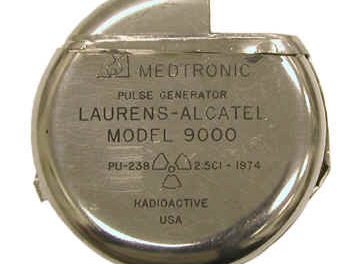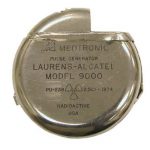Can a ping from Sonar kill you?
Say you’re swimming along in the ocean minding your own business, and an underwater submarine some several miles away decides to go active sonar (Sound Navigation and Ranging) and “ping” the surrounding area. Could that kill you? Surprisingly, YES!

Modern Naval sonar emits rolling waves of sound that can top 235 decibels (dB) which would instantly hemorrhage your brain if you were too close. These pressure waves can travel several hundred miles under water, as sound travels much more efficiently in water than air due to water being non-compressible and much denser than air. Generally, anything above 200 dB can rupture your lungs if you are exposed to those type of pressures, and above 210 dB will travel through your head and cause brain hemorrhaging.
In fact, there are actual operations protocols for military surface vessels to engage active sonar in response to a water born threat such as divers attempting to attach explosives, or attempting to board the ship without authorization, and refusal to stand down. This engagement is generally assumed to be a lethal means of mitigation and can be authorized by the ATTWO (AntiTerrorism Tactical Watch Officer) on duty.

Luckily there are rules in place for military vessels and active sonar that prohibit its use within 5 miles of civilian populated land or ports. There are also agreements in place not to use active sonar in known wildlife breeding grounds, wild life sanctuaries or other key habitat areas.

Another misnomer is the understanding of active versus passive sonar. Active sonar is very rarely if ever used by modern submarines (outside of training exercises) for operation security (OpsSec) reasons. Using such drastic measures gives away your location to anyone listening in the surrounding area and is largely unnecessary in modern warfare. Passive sonar utilizes arrays of microphones surrounding the vessel to constantly listen or monitor their surroundings. Sound waves can travel many hundreds of miles underwater, and the amount of salinity and temperature of the water actually increases acoustic characteristics.
Modern vessels can determine with extreme accuracy what surrounds them simply by passively listening to the sound waves around them. There are classified databases that house acoustic signatures for all sorts of things such as noisy container ships, all the way down to small schools of shrimp passing by, so the need for active sonar and sending out active sound waves to determine the environment is not needed, and will actually in most cases compromise their position once broadcast. Active sonar is largely used in training exercises, in designated areas.
What does a “ping” from an active sonar transmitter sound like? It is said to sound similar to a sneaker squeaking on a gymnasium floor, a very high pitched squeal. This is likely due to the higher frequencies that modern military vessels use as it has a higher definition signature upon return to the receiver for analysis. The smaller high frequency waves can paint a much better picture of an object once they are reflected than a lower frequency wave that has a much larger amplitude.
Happy swimming!











Recent Comments